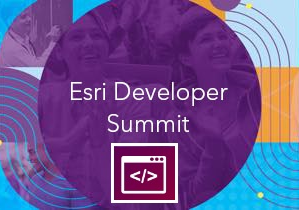 The 2017 Esri Developer Summit in Palm Springs, CA is right around the corner! It will feature a lineup of more than 50 technical sessions and demo theaters focused on web development topics. With so many to choose from, the task of navigating sessions and figuring out how to best plan your week might feel somewhat daunting. This blog and the accompanying resources are aimed at helping you with your planning.
The 2017 Esri Developer Summit in Palm Springs, CA is right around the corner! It will feature a lineup of more than 50 technical sessions and demo theaters focused on web development topics. With so many to choose from, the task of navigating sessions and figuring out how to best plan your week might feel somewhat daunting. This blog and the accompanying resources are aimed at helping you with your planning.
For your convenience, below you’ll find a collection of printable example pathways and also a complete listing of categorized web-focused sessions.
Inside Scoop: Navigating Your Way Through the ArcGIS API for JavaScript Sessions
Tuesday, 1:00 PM – 2:00 PM (Oasis 4)
We want to help you make the most of your week. One of the best ways to get a taste for all the sessions throughout the week is to attend the very first session after Plenary, “Inside Scoop: Navigating Your Way Through the ArcGIS API for JavaScript Sessions.” In this session, all available presenters will each get one minute to promote their session. The goal is to give you a quick preview of each of the sessions, and answer any questions you have about what will be covered.
Tech session strategy and organization
A wide range of developers attend DevSummit, with varying levels of experience and interests. For that reason, we have sessions ranging from introductory to very advanced, specialty sessions. Topics involve integration with ArcGIS platform data and capabilities, programming patterns and best practices when developing with the JavaScript API, practical guides for building a 2D or 3D app from the ground up, general web development tips and tricks, integration with 3rd party technologies such as application frameworks, and more. Here are some topic areas and example pathways to help navigate your week at DevSummit.
Getting Started with 4.x
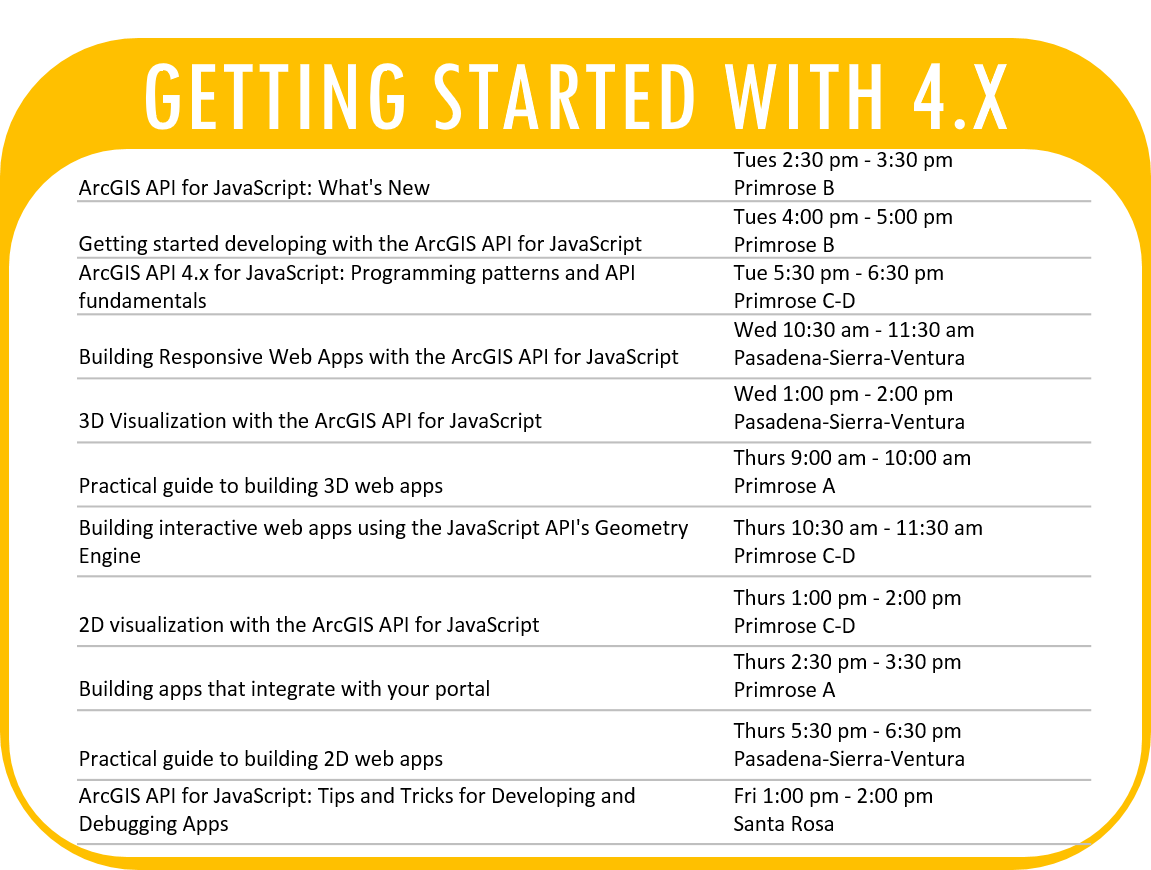
If you are a developer new to the ArcGIS API for JavaScript and would like to get up to speed on the API capabilities, programming patterns and fundamentals, and other key aspects about developing with the API (such as visualization techniques and integration with your portal) this example pathway might be useful to you. The most critical session on this list is “ArcGIS API 4.x for JavaScript: Programming patterns and API fundamentals” as it will be a great overview of the important programming concepts for developing with the API. This is also a great session for developers coming from the 3.x version of the API.
4.x “Deeper” Dive
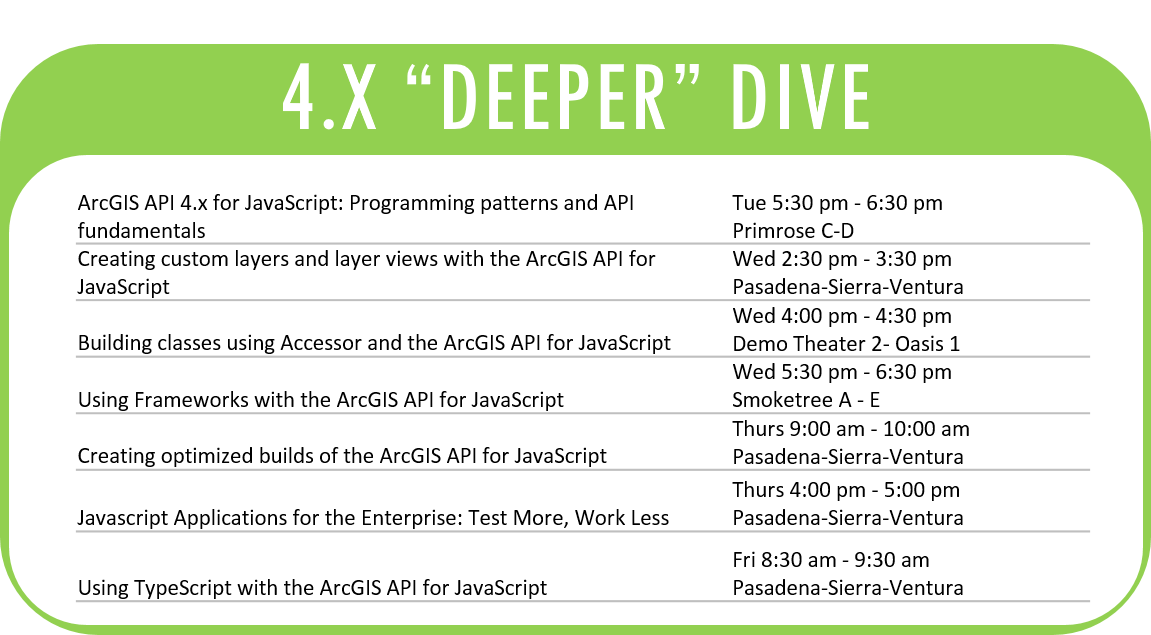
Have you already started developing with 4.x and are looking for more advanced/specialized topics? This collection of sessions will cover some of the topics that will help you integrate with 3rd party frameworks, create optimized builds of the API, and will teach various patterns such as building classes using Accessor which will model the design of the API’s classes. There are many other sessions not listed in this pathway, but these should give you a feel for some of the options you may be interested in.
For the 3D Web Developer
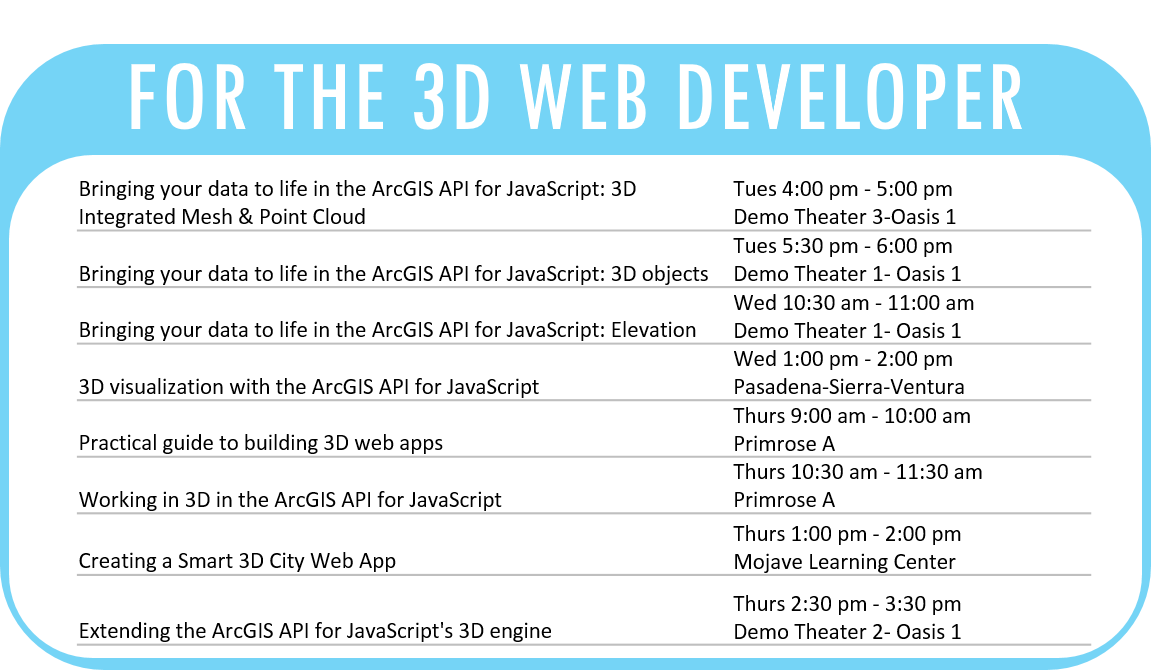
Do you want to get up to speed on developing 3D web apps? This example pathway is all about learning the fundamentals of 3D web development, presented by some of the developers that work on the 3D aspects of the API and the Scene Viewer. Some of the sessions cover the data authoring-publishing-consuming workflows, while others cover topics involving what you need to know when designing and building 3D web apps. Two sessions worth highlighting in this section are (1) 3D visualization – this will be an inspiring session all about the various techniques available for styling your 3D scene (both from a data authoring perspective, and from within the JS API), and (2) Creating a Smart 3D City Web App, which will demonstrate how you can use Scene Layers to create compelling user experiences with your 3D features and attributes.
Building your UI
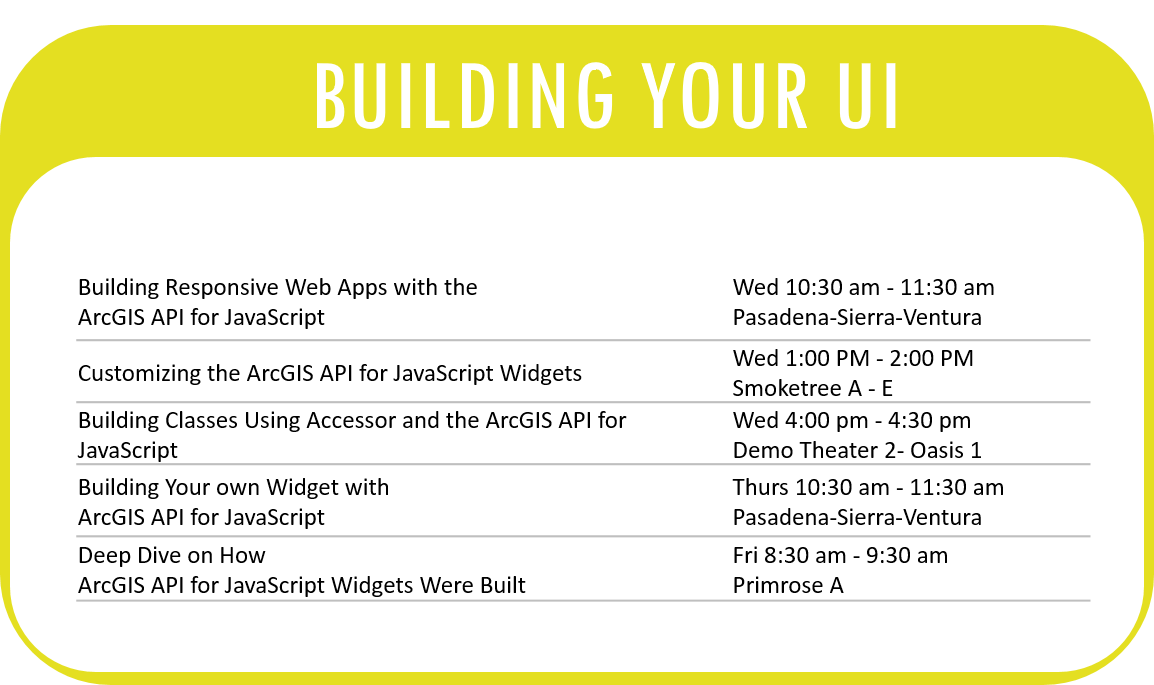
This series of sessions were carefully scheduled so that you can attend them in a specific order. It starts with a wide overview of the capabilities in the API that were designed to help you build a responsive web app, and a brief overview of the API widgets. The rest of the sessions are focused on using, styling, and customizing API widgets, as well as what you need to know in order to build your own custom widget using the same pattern as API widgets. All of these sessions are highly recommended if you want to learn about building your UI with the JS API.
Printable guides
Continue your learning after DevSummit
Because there are so many web development sessions and limited time, it is unavoidable that there will be sessions scheduled concurrently that you might really want to attend, but can’t be at two places at one time. However, we have made every effort to schedule sessions in a way to minimize concurrency of sessions that build on each other or are particularly complimentary. All sessions will be recorded this year so if you miss a session you should be able to watch it when you get home after your fun-filled week.
Here at Esri, we are all pretty excited to share our latest work, connect with the developer community, and help you be successful developing with the most recent innovation in ArcGIS technology. Feel free to add a comment to this blog if you have questions about any of the sessions, or anything in general regarding this year’s Developer Summit. See you very soon, developers!
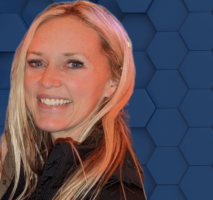
Commenting is not enabled for this article.